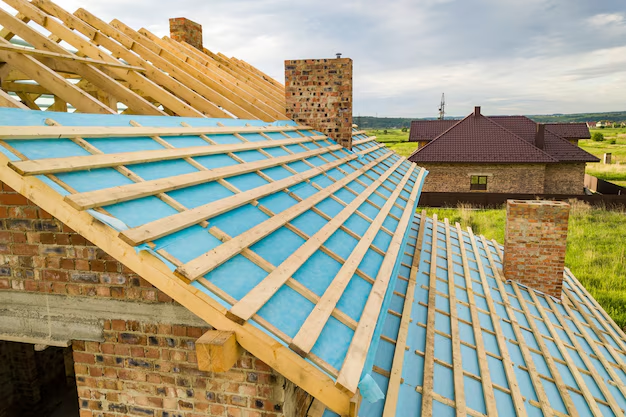Discover the Easiest Way to Measure Roof Pitch
If you're a homeowner or tackling a DIY renovation, understanding how to determine your roof pitch is crucial. The roof pitch isn't just a structural detail; it plays a significant role in the aesthetic, drainage, and overall functionality of your roof. Knowing your roof pitch can influence everything from the style of roofing materials you choose to the ease and cost of repair and maintenance.
Why Roof Pitch Matters
The pitch of your roof affects more than just its visual appeal. It determines how well your roof will handle snow, rain, and debris. A steeper pitch allows rainwater to drain more efficiently and is often better suited for areas with heavy rainfall or snow. Conversely, a low-pitch roof may offer extra roofing material choices but can require better drainage systems to handle water effectively.
How to Calculate Roof Pitch
Calculating your roof pitch is straightforward and can be done with basic tools. Here’s how to do it:
Gather Your Tools: You’ll need a tape measure, a level (at least 24 inches long), and a pencil.
Locate the Roof Base: Get to the edge of the roof or visualizing from the attic, place your level horizontally, and make sure it’s balanced.
Measure the Length: Mark the 12-inch mark on the level to establish the "run," or horizontal distance.
Measure the Height (Rise): From the 12-inch mark, use the tape measure to determine the vertical rise from this point to the roof surface. This measurement is your “rise.”
Calculate the Pitch: The pitch is expressed as the ratio of the rise over the run. For example, if your rise is 6 inches for every 12 inches of run, your roof pitch is 6/12.
Understanding your roof's pitch is a small task that delivers big peace of mind—it helps in choosing materials, estimating costs, and ensuring structural safety.
Next Steps: Financial and Educational Resources
Thinking about changes to your roof and unsure about the costs? Financial assistance and educational programs might just be what you need to ease the burden:
Government Aid Programs: Programs like the Homeowner Assistance Fund (HAF) provide aid for maintenance and home projects, ensuring safety and integrity.
Energy Efficiency Incentives: Look into local or national incentives for making energy-efficient upgrades to your home, which might include roofing materials.
Educational Grants: If pursuing a career in construction or architecture sparks your interest, consider educational assistance to further these opportunities.
Credit Solutions: Options like home improvement loans or specific credit lines can make larger projects manageable without immediate financial strain.
Taking the leap into home improvements can invoke concerns about costs and financing. However, with plenty of financial tools and resources available, you can make informed decisions that benefit your home and wallet. Here’s a summary of financial assistance options to consider:
- 🏠 Homeowner Assistance Fund (HAF): Provides financial support for necessary home repairs.
- 🌟 Energy Star Rebates: Offers rebates for using energy-efficient roofing materials.
- 🎓 Student Grants: Available for educational opportunities in construction management.
- 💳 Home Improvement Loans: Tailored credit options for roofing and other renovations.
- 💡 Local Incentives: Check with local government offices for additional rebates or support programs.
Whether you're measuring roof pitch for the first time or venturing into your next home improvement project, these resources are here to support your journey and ensure your project is both fiscally sound and structurally safe.
